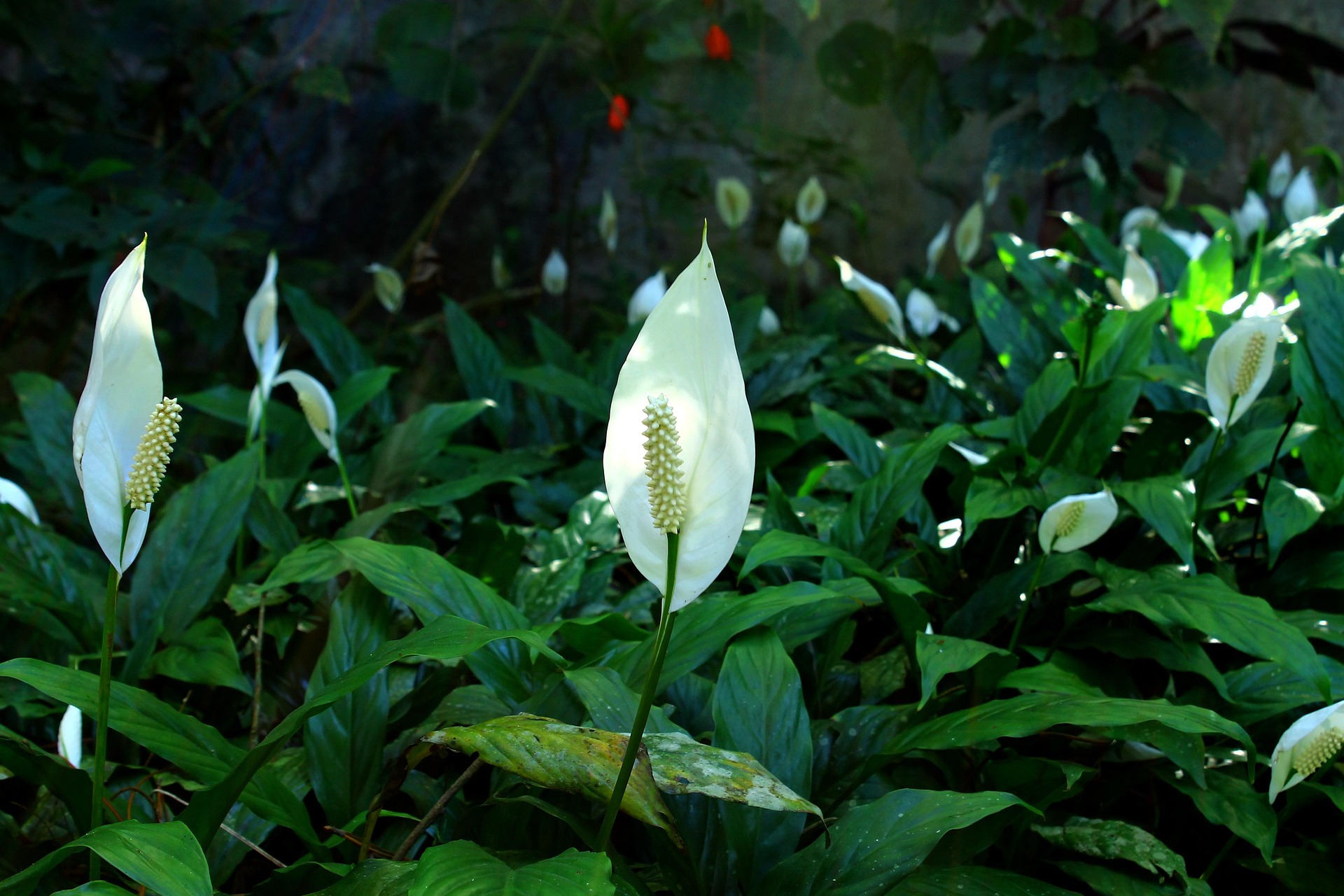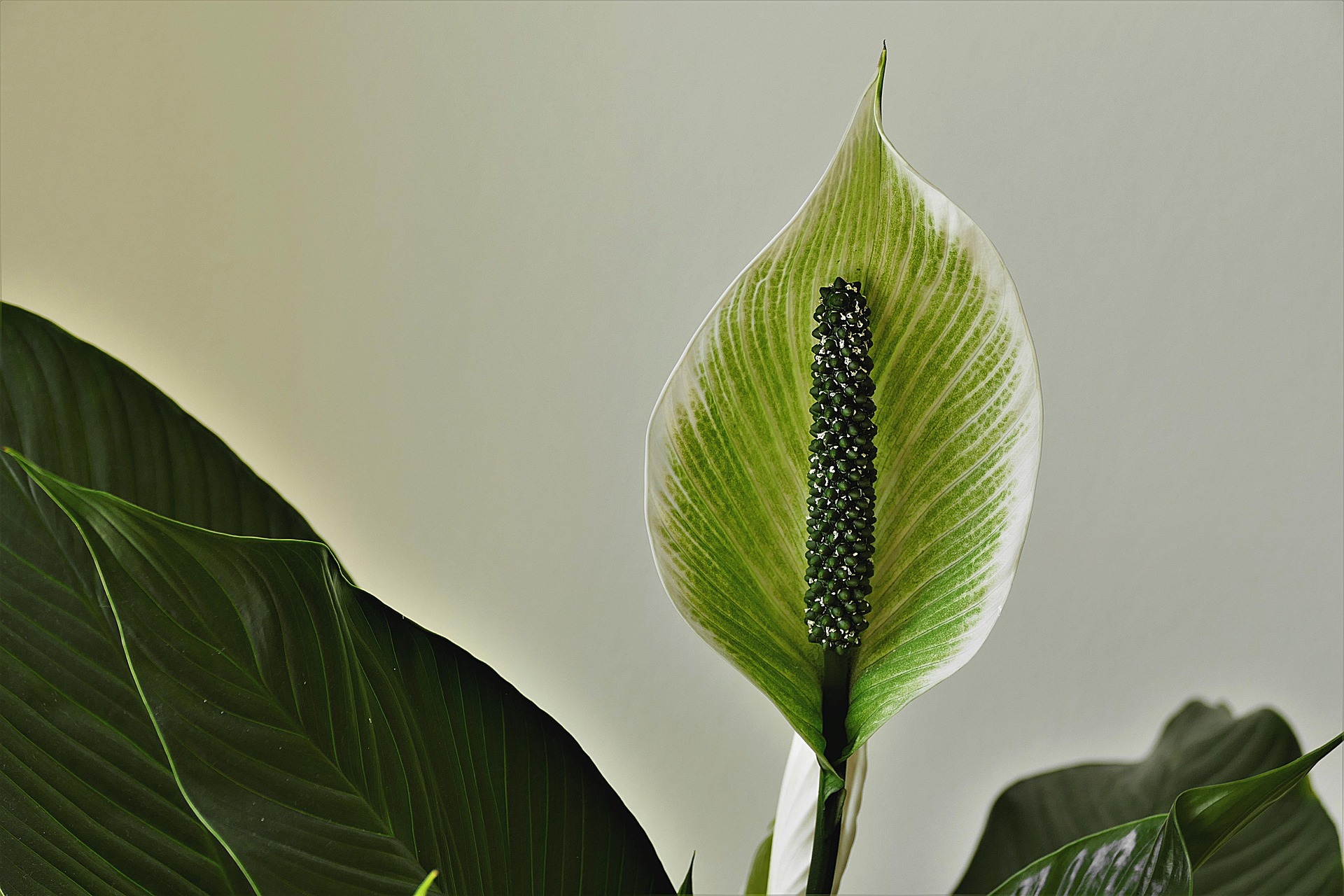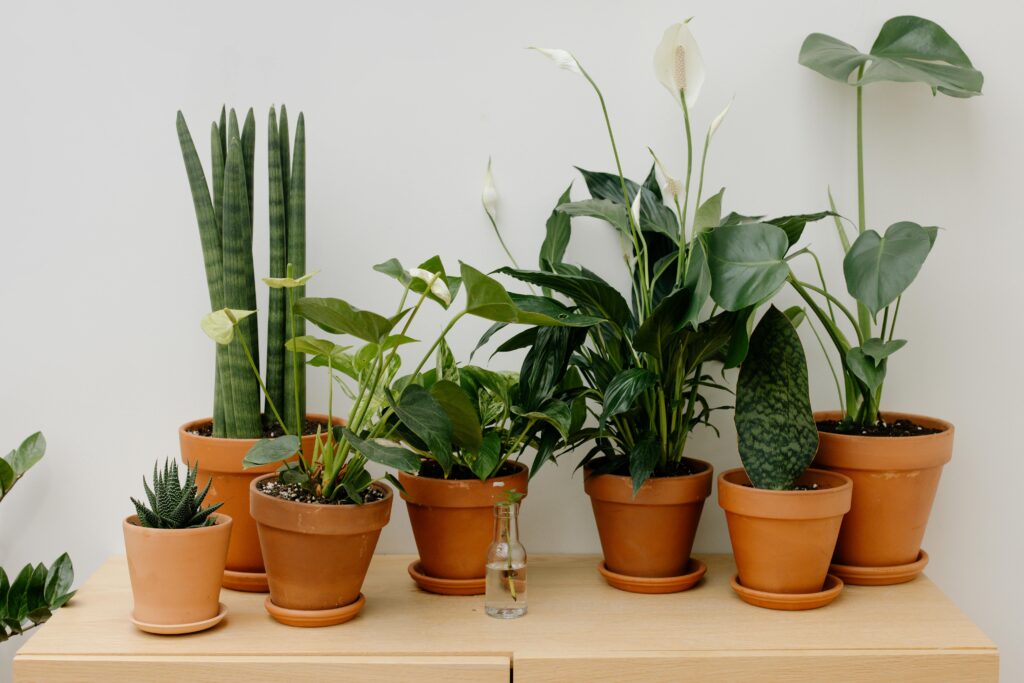People admire the Variegated Peace Lily Plant as a unique version of Spathiphyllum since it showcases elegant green foliage alongside eye-catching white or cream colorations. The fine-looking houseplant combines interior design appeal with air purification abilities which makes it popular among plant collectors.

Table of Contents
What is a Variegated Peace Lily Plant?
The Variegated Peace Lily is a cultivar of the Spathiphyllum species, characterized by its distinctive variegated foliage. Unlike the traditional all-green Peace Lily, this variant showcases leaves with white or cream streaks, adding a unique visual appeal to any indoor space.
Popular Varieties:
- Domino: A marbled pattern emerges from dark green foliage due to its irregular white streaks which run across the leaves in the Domino variety.
- Picasso: The leaf pattern of Picasso stands out because its white sections create powerful contrast with green leaf tissue.
- White Stripe: Each leaf of White Stripe shows a major white stripe that runs vertically from the center.
- Platinum Mist: Platinum Mist produces silvery-gray variegation that creates a misty look on its leaves.
- Silver Cupid: The silver-gray spotting on dark green leaves defines Silver Cupid to create a heavenly appearance.
Right Setup for Peace Lily Spathiphyllum
Light Requirements
A healthy environment for Variegated Peace Lilies consists of receiving bright light but not directly under it. The plants can survive under dim lighting but such conditions will gradually strip away their white patterns until they become primarily green leaves.
Tips:
- The perfect spot for variegated Peace Lilies exists in areas that receive eastern or northerly window illumination.
- Sheer curtains should be used for regulating intense sunlight exposure.
- Periodically turning the plant will help it grow equally on all sides.
Temperature and Humidity
The tropical plants require heat ranges from 18°C to 27°C and maintain their ideal growth between 18°C and 27°C. The plant body responds negatively to air currents along with quick variations in temperature. Desired humidity ranges should reach 50% or higher.
In dry environments, consider:
- Using a humidifier.
- The plant benefits when a water-filled tray is positioned near its base.
- Regularly misting the leaves.
Soil and Potting
A peat-based mix with excellent drainage characteristics should be used for the white plant. When added to the potting mix perlite and orchid bark improve drainage and help minimize waterlogged conditions.
Potting Tips:
- Choose pots with drainage holes.
- You should replace the plant in a new container either yearly or immediately after outreach confinement occurs.
- The use of big-sized pots should be avoided because they hold excess water.
Watering and Fertilization for Peace Lily Care
Watering Tips
- Check Soil: Inspect the surface soil then provide water only when it feels dry to touch. Peace Lilies should not remain in saturated soil.
- Use Clean Water: The chemicals found in tap water should be avoided because they cause leaf tips to turn brown. Filtered or rainwater works best.
- Avoid Overwatering: Excessive water creates an environment for root rot disease. Plant pots should have drainage holes to prevent the plant from resting in water.
- Prevent Wilting: The drying out of Peace Lilies can cause stress to your plant if it occurs more than occasionally. Regular watering according to soil saturation should become your standard practice.
Fertilization Tips
- Feed Regularly: A balanced water soluble fertilizer should be used during spring and summer to maintain robust foliage development coupled with blooming.
- Dilute Strength: Dilute the feeding solution to half-strength because excessive feeding will damage roots and trigger root browning.
- Pause in Winter: The plant enters natural dormancy in winter because it requires no additional nutrients. When fresh vegetation emerges start feeding once again.
- Flush Salts: Toxic fertilizer residues carrying salts will build up into white powder on the soil so you must wash them away by flooding with water.

Pruning and Maintenance for Blooming Peace Lily
- Remove yellow or brown leaves: You should cut away yellow or brown leaves from the stem and do this using clean scissors.
- Trim spent flowers: Remove faded white spathes from your philodendron after they lose their beauty to promote new plant development.
- Clean the leaves: Wash the leaves by using a moist cloth to increase photosynthetic rates.
Propagation
- Remove Plant: Carefully take the plant out from its container.
- Divide Roots: Each section of root clump needs at least three to four leaves together with healthy roots for successful separation.
- Repot Sections: Place each division into a new pot filled with fresh, well-draining potting mix.
- Water & Place: Provide the plant with a complete water supply before moving it to an area which receives indirect bright lighting.
Common Issues and Solutions
- Loss of Variegation: Caused by insufficient light. The plant needs to go into a better-lighted spot.
- Brown Leaf Tips: Due to low humidity or fluoride in tap water. Increase humidity and use distilled water.
- Pests: Check for mealybugs and spider mites within the plant. Infestation treatment requires application of insecticidal soap or neem oil.
- No Blooms: Proper plant-light conditions combined with moderate fertilization are necessary to prevent no blooms from occurring.
Final Thoughts
Inside any indoor environment This flower stands out with its air-cleaning benefits in addition to its gorgeous appearance and minimal care requirements. Its refined white flowers with green-and-cream leaf patterns make it a stunner which requires only modest care.
FAQs:
1. Is the Variegated Peace Lily rare?
While once considered rare, advancements in tissue culture have made variegated varieties more accessible. However, they may still be less common than the standard green Peace Lily.
2. Can I grow Peace Lily in low light?
They can survive in low light but may lose their variegation. For vibrant foliage, provide bright, indirect light.
3. Are Variegated Peace Lilies safe for pets?
No. The entire Peace Lily plant contains hazardous substances that will make pets sick after ingestion and trigger vomiting together with drooling.
4. How often should I repot my Peace Lily?
There are two repotting intervals: 1-2 years and root-bound stages in springtime.
5. Why are the leaves of Peace Lily turning yellow?
No matter if caused by too much water, defective drainage system or inadequate nutrient supply the leaves will turn yellow. The right combination of water and possible seasonal application of fertilizer will keep the plant healthy.


The Variegated Peace Lily seems like such a fascinating and versatile plant! Its combination of beauty and air-purifying abilities makes it a must-have for any indoor space. I’ve always been curious about how well it adapts to different lighting conditions—does it truly thrive in bright, indirect light, or can it handle lower light without losing its variegation completely? The fact that it can survive in less-than-ideal conditions but might lose its unique patterns is intriguing. I wonder if there’s a way to maintain its vibrant foliage without needing constant care. The warning about its toxicity to pets is definitely something to keep in mind—are there any safe alternatives for pet owners who still want a similar aesthetic? Overall, it sounds like a stunning plant, but I’d love to hear more about how others have successfully cared for it!
The Variegated Peace Lily is truly a stunning addition to any home, combining beauty with functionality. Its unique variegated leaves add a touch of elegance, while its air-purifying qualities make it a practical choice. I appreciate how it thrives in bright, indirect light, though it’s interesting that it can survive in low light, even if it loses its variegation. The fact that it’s toxic to pets is a bit concerning—do you have any tips for keeping it out of reach? I’m also curious about the repotting process—how do you know when it’s time to repot? Overall, it seems like a low-maintenance plant with high rewards, but I’d love to hear your thoughts on its care and how it’s worked in your space. What’s your experience with its variegation—does it stay vibrant with your care routine?